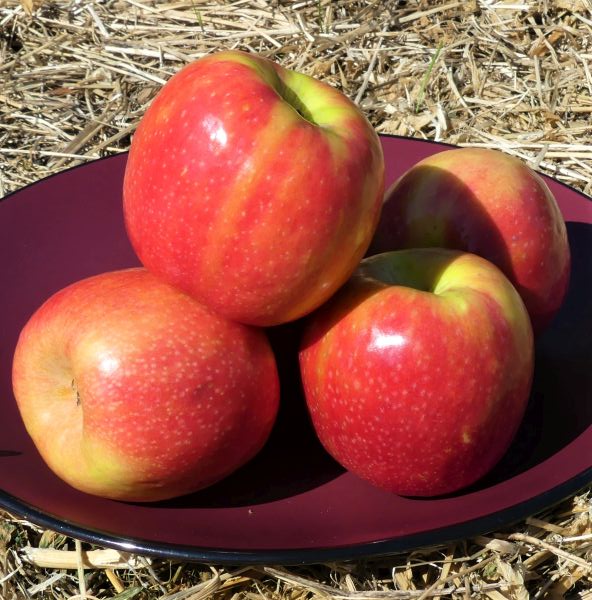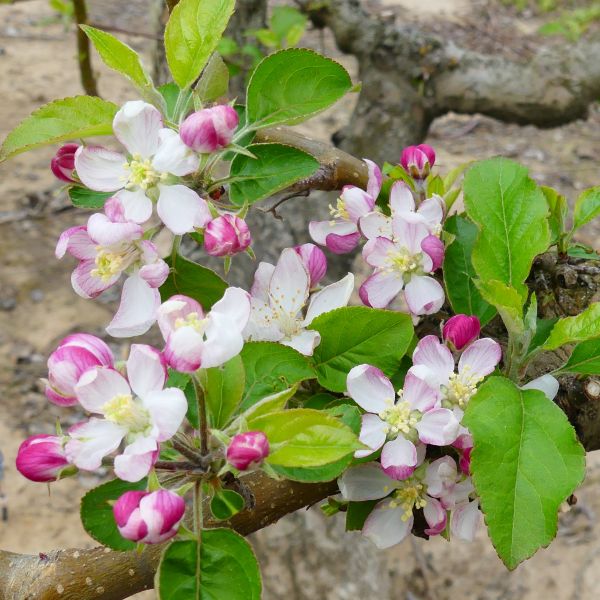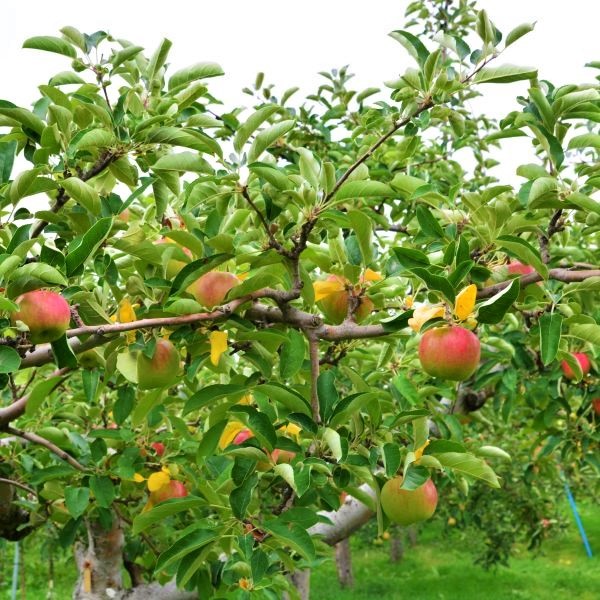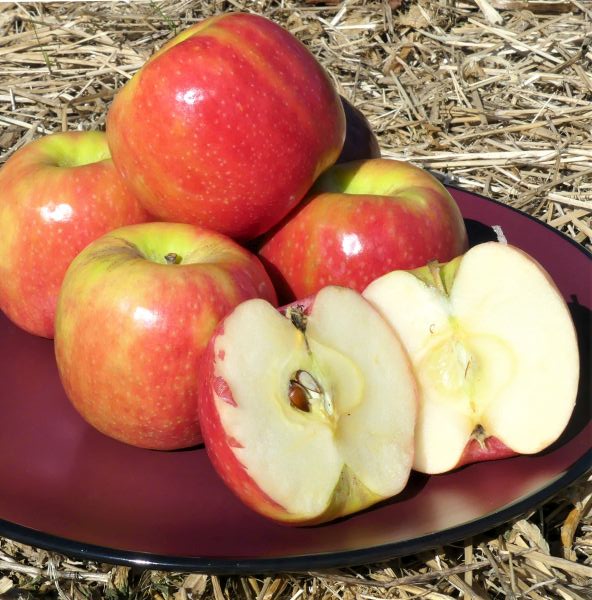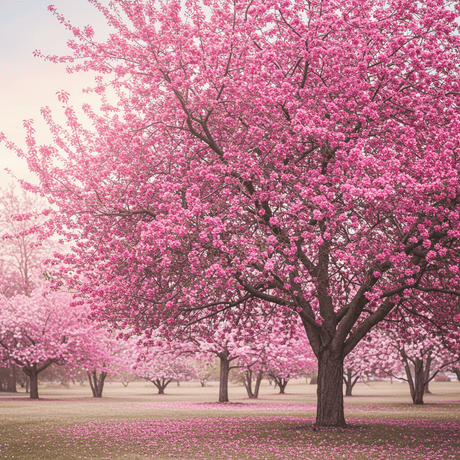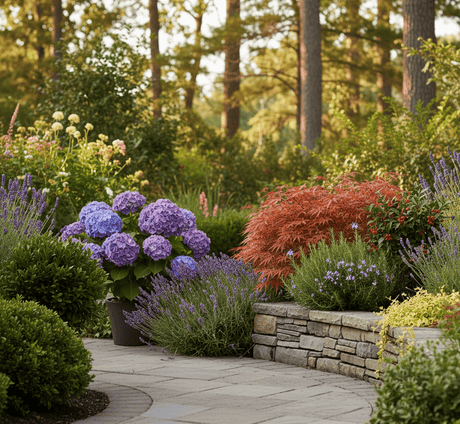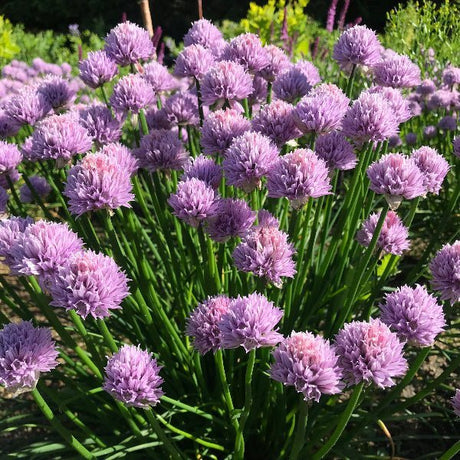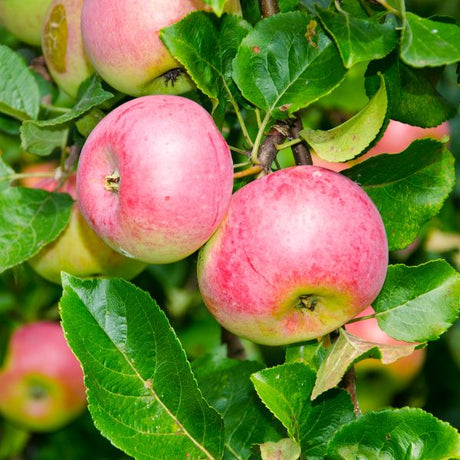Pink Lady Apple Tree (Cripps Pink Variety)
Malus 'Pink Lady' ('Cripps Pink')
Plant Sentry™
Plant Sentry™

Plant Sentry™ Protected
Your order is protected by our compliance system that:
- Prevents restricted plants from shipping to your state
- Ensures plants meet your state's agricultural requirements
- Protects gardens from invasive pests and diseases
Delivery and Shipping
Delivery and Shipping
Delivery and Shipping
Fast, Safe Plant Delivery
Ships in 3-4 business days • Tracking provided • Weather protected
| Under $50 | $9.99 |
| $50 - $99.99 | $14.99 |
| $100 - $149.99 | $16.99 |
| $150 - $198.99 | $24.99 |
| $199+ | FREE |
✓ Zone-specific timing • ✓ Professional packaging • ✓ Health guarantee
Understanding Plant Options
Nature Hills offers plants in two main formats:
- Container Plants: Grown in pots with soil, sized by container volume and plant age
- Bare Root Plants: Dormant plants without soil, sized by height measurements
Container Plant Sizes
Container sizes indicate plant age and growing capacity rather than liquid volume equivalents. Our containers follow industry-standard nursery "trade gallon" specifications, which differ from standard liquid gallon measurements.
Young Plants (6 months to 18 months old)
| Container Size | Actual Volume | Metric Equivalent |
|---|---|---|
| 2" x 2" x 3" | 0.18 - 0.21 dry quarts | 0.20 - 0.23 dry liters |
| 4" Container | 0.31 - 0.87 dry quarts | 0.35 - 0.96 dry liters |
| 4.5" Container | 0.65 dry quarts | 0.72 dry liters |
| 6" Container | 1.4 dry quarts | 1.59 dry liters |
| 1 Quart | 1 dry quart | 1.1 dry liters |
| 5.5" Container | 1.89 dry quarts | 2.08 dry liters |
Established Plants (18 months to 2.5 years old)
| Container Size | Actual Volume | Metric Equivalent |
|---|---|---|
| 2 Quart | 2 dry quarts | 2.2 dry liters |
| #1 Container | 2.26 - 3.73 dry quarts | 2.49 - 4.11 dry liters |
| 5" x 5" x 12" | 3.5 - 4.3 dry quarts | 3.85 - 4.74 dry liters |
Mature Plants (2-4 years old)
| Container Size | Actual Volume | Metric Equivalent |
|---|---|---|
| #2 Container | 1.19 - 1.76 dry gallons | 5.24 - 7.75 dry liters |
| #3 Container | 2.15 - 2.76 dry gallons | 8.14 - 12.16 dry liters |
Large Plants (3-5 years old)
| Container Size | Actual Volume | Metric Equivalent |
|---|---|---|
| #5 Container | 2.92 - 4.62 dry gallons | 12.86 - 20.35 dry liters |
| #6 Container | 5.25 - 6.01 dry gallons | 23.12 - 26.42 dry liters |
| #7 Container | 5.98 - 6.53 dry gallons | 26.34 - 28.76 dry liters |
Bare Root Plants
Bare root plants are sold by height from the root system to the top of the plant. Plants may exceed minimum height requirements.
Common Sizes:
- Trees: 1 foot, 2 feet, 3 feet, 4 feet, 5 feet, 6 feet
- Shrubs & Perennials: 1 foot, 18 inches, 2 feet
Important Notes
Container Volume Specifications
- Trade Gallon Standard: Our containers follow industry-standard "trade gallon" specifications established by the American National Standards Institute (ANSI Z60.1) for nursery stock
- Volume Variations: Actual soil volume may vary due to plant root systems and growing medium settlement
- Age Indicators: Container size primarily indicates plant age and maturity rather than liquid volume equivalents
Growing Conditions
- Plant size can vary based on variety and growing conditions
- Container size helps indicate plant maturity and establishment level
- Larger containers generally mean more established root systems and faster landscape establishment
Seasonal Availability
- Bare root plants are available seasonally when dormant
- Container plants are available throughout the growing season
- Specific varieties may have limited availability in certain sizes
Questions?
For questions about specific plant sizes or availability, please contact our plant experts who can help you choose the right size for your landscape needs.

Plant Sentry™ Protected
Your order is protected by our compliance system that:
- Prevents restricted plants from shipping to your state
- Ensures plants meet your state's agricultural requirements
- Protects gardens from invasive pests and diseases
Plant Profile & Growing Essentials
Cold hardy, Flowering, Edible, Ornamental Berries/Fruit, Thornless, and Attracts pollinators
-
Botanical Name
-
Height
-
Width
-
Growing Zones
-
Sunlight
-
Growth RateModerate
-
Flower Color
-
Leaf Color
-
Fall Color
-
Pollinator FriendlyYes
-
Pollinator Required
-
Bloom PeriodLate Spring
-
Harvest Time
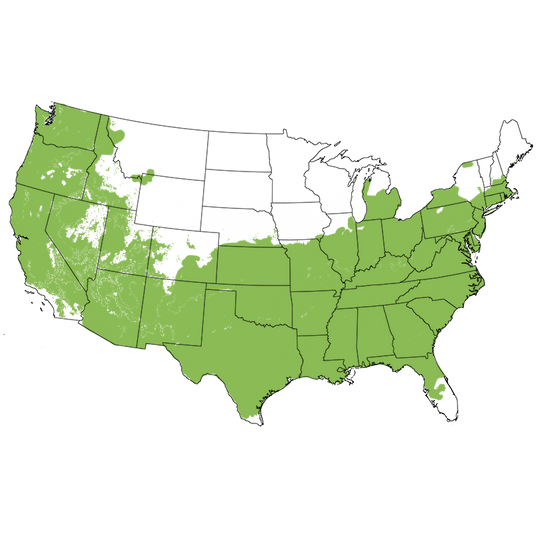
Growing Zones 6-9
Beauty, Fragrance & Superior Taste - Pink Lady Apple Tree!
- Orangey Fuchsia-Pink Blushed Yellow Skin
- Yellow-Tinted White Flesh
- Firm Texture & Sweet-Sharp Fragrant Flavor
- Soft Pink Buds Open to Fragrant White Spring Flowers
- Long-Lasting Bloom Time
- Doesn't Brown When Slicing
- Reliable, Late Season Harvest October-November
- Heat Tolerant
- Long Growing Season
- Stores Very Well
- Adaptable to a Variety of Soils
- Requires a Pollinator Partner
- 400 Chill Hours
Pink Lady Apple Tree (Cripps Pink Variety) (Malus 'Pink Lady' (Cripps Pink)) is as gorgeous as it is healthy! Carrying a distinctive fuchsia blush that dominates the yellow background of this superbly beautiful fruit sometimes has an orange tint.
These look like beautiful jewels hanging from the lovely green foliage! Clothed in this magnificent coloring, this fruit tree invariably creates a head-turning effect when it's ripe for harvest!
Its adorable pink-colored buds open into a profusion of pink-accented, white flowers. The spring show is fragrant, long-lasting, and certain to draw pollinators to your yard! You’ll enjoy the gorgeous display of flowers each year. It’s easy to see why there are entire Festivals devoted to Apple Tree blooms!
These medium-large apples are firm and aromatic, with what some say is a fragrance of pear or cider. When you approach this tree you'll be astonished by its beauty. But that's nothing compared to what you'll experience when you actually reach out and pick one!
Easy to grow, the gorgeous foliage and a strong, rounded shape, make this is a lovely tree to backdrop the blooms and jewel-like fruit. Also fantastic backdrop for your gardens and landscaping needs.
The fruit ripens in October-November, extending your joy of harvest time when other fruits have completed their season.
Biting into the yellow-tinted, white flesh will create a flavor explosion. Crisp and juicy, the effervescent flavor is that of an apple, but with a distinctive taste of melon and just a hint of citrus. A subtle dash of tartness gives it just enough zing to tantalize your taste buds and make you yearn for the next bite!
One of the best features is that although delicious right off the tree, refrigeration and storage actually improves the flavor after about four weeks in storage. Long hang time, long-lasting flavor in refrigeration and cool storage, your crop will keep its taste and crunch for the duration.
Developed in the 1970s by John Cripps from a cross between the Lady Williams apple tree and Golden Delicious, these are heat-loving natives of Western Australia. Pink Lady is now a popular fruit here in the United States and tolerates the heat and humidity of the southern states.
How to Use Pink Lady Apple Tree In The Landscape
With so many varieties of apples on the market today, it can be difficult to know which ones to grow. Offering not only superior flavor but great storage so you can enjoy your delectable fruit for longer.
Besides fresh eating, the dense texture makes this a great cooked apple. It also produces excellent apple juice with a primarily sweet flavor, and the sweetness makes for fantastic cider.
Applesauce and pies benefit from the high sugar content, and these hold their shape during cooking well. Resisting browning when sliced and cut, these are perfect for great-looking fresh fruit trays and fruit salads! Lunch box sized, this healthy snack-on-the-go is high in vitamins, antioxidants and is a low-calorie fruit!
Lovely shade for your gardens and patios, these ornamental beauties are fantastic landscape specimens and accent trees. Just the right size for orchards and gardens of all sizes, you can prune these smaller as needed or try your hand at training this tree as Espalier!
The gloriously white, fragrant blooms are lovely to sit beneath. Be sure to plant one outside your window so you won’t miss a moment of the long blooming season. Plus you get to watch your harvest develop on the branches!
Lovely sized for home orchards, dual-purpose edible landscaping or just as a lovely accent tree, your landscape will benefit from the beauty. Plant a flowering tree that just happens to also produce a great yield of healthy snacks!
Pollinators adore the white blooms and so will you! The fragrant blooms are lovely boughs to bring in for some spring floral arrangements.
Add in the fragrance and beauty of this variety, and you can see why this tree is a good choice in an apple tree for your home.
#ProPlantTips For Care
Fruit trees require full sun for the best yield, at least 6 hours of direct sunlight a day. Plant these in a well-drained site that has good air circulation and sunshine! Not particular on the type of soil, apple trees are widely adaptable and tolerate slightly acidic conditions.
A generous layer of mulch helps retain soil moisture as well as insulate the root system from heat and chill.
Heat tolerant and preferring USDA growing zones 6-9, these may even retain their foliage well into winter when temperatures are mild. Only requiring about 400 chill hours to produce flowers and fruit.
Water your tree consistently and do not let dry out during times of drought. While somewhat drought-tolerant, it’s best to protect your investment and ensure a healthy crop by keeping to a regular watering schedule.
Prune to ensure a canopy where sunlight and air circulation can easily enter the interior of the tree. While showing some resistance to most apple tree diseases and other problems, pruning will help prevent most of these issues.
Thin the fruit to keep your fruit size consistent and maintain the health of your tree.
Nature Hills ships your tree already at least 3 years old, so you won’t need to wait long for your first harvest!
Perfect for warm climates with low chilling requirements, these fruits have a long storage life, making them often seen in the grocery store. However, there is absolutely nothing like picking a fresh apple off a tree that you grew yourself!
Add a gorgeous apple tree for both ornamental beauty and your own healthy snacks! Give NatureHills.com a call and start growing a Pink Lady Apple Tree (Cripps Pink Variety) today!
Pink Lady (Cripps Pink) Apple Tree Frequently Asked Questions
When to Plant Pink Lady (Cripps Pink) Apple Trees
Planting Bareroot trees as soon as you can dig a hole in spring and until hot weather, the earlier the better. Plant container Apple trees throughout the growing season with complete success - that is the benefit of container plants - to extend the planting season. Your County Agricultural Extension Office is a great resource for first and last frost dates in your area.
How to Plant Pink Lady (Cripps Pink) Apple Trees
Dig a large hole only as deep as needed to accommodate the bareroot or container root ball, and twice as wide. Add Nature Hills Root Booster to speed root establishment. Remove the pot or bag and situate it into the hole so the top of the soil (soil line if bareroot), is level with the new location's soil being careful not to plant too deep. Water in again very well and backfill with the same soil you dug up, tamping down gently to ensure there are no air pockets.
Top off with a 3-4 inch thick layer of Arborist mulch. Consider staking your tree to keep its trunk growing straight for the first year to ensure it stands tall against strong winds and drifting snow.
When to Prune Pink Lady (Cripps Pink) Apple Trees
Trim off any broken branches from delivery as soon as you take them out of the box. Prune and trim apple trees while dormant, in late winter or early spring, before you see new growth.
How to Prune Pink Lady (Cripps Pink) Apple Trees
Dormant prune to:
- Remove any double leaders or narrow crotch angles
- Eliminate any crossing branches
- Thin interior branching and leave the fruiting spurs and strong branches in place opening up the canopy
- Branching at least 24-36 inches above the ground
Prune Apple trees in the summer to:
- Control size and shape by reducing the length of longer new growth on vigorous trees
- Remove water sprouts on the main trunk or older branches in the crown
- Remove suckers at the base of the trunk
- Thin fruit during heavy years on established trees
How to Care for Pink Lady (Cripps Pink) Apple Trees
Growing an apple tree is easy when proper soil, good drainage, attention to moisture, and regular fertility are maintained. Once you've chosen an apple tree that works for your climate, in the size you need for your landscape, and its pollinator (if needed), then you've accomplished half the battle!
- Apple trees do best in full sun and well-drained soil
- Water your apple trees when it gets dry - especially during the fruit production stage, and drought periods to keep it stress-free
- Use arborists' wood chips to mulch over the roots of your apples and have your soil tested to see what your soil may be lacking before adding fertilizers
- Maintenance pruning and shaping
Apple trees will tolerate a wide range of soils, so long as water and nutrients are not limited and the pH level is adequate.
How to Fertilize Pink Lady (Cripps Pink) Apple Trees
For the first year, water alone is most important. It is always best to get a soil test to see what your soil is lacking before adding more fertilizers. Once established, a fertilizer routine may be beneficial. We do offer some excellent slow-release organic options, applied according to the package directions.
Fruit trees need more phosphate and it's possible to apply too much nitrogen which affects the soil's pH. Test soil acidity or alkalinity using a pH Tester.
Fertilize in spring when you first see new growth emerging.
- Don't overdo it
- Phosphates are your friends
- Pay attention to pH in areas with extremely high or low soil pH
- Follow the directions
Pink Lady (Cripps Pink) Apple Tree Pollinating Info
Pink Lady (Cripps Pink) is not self-fruiting and needs a pollinating partner. Pair with one of these varieties:
- Cortland Apple Tree
- Empire Apple Tree
- Frostbite™ Apple Tree
- Fuji Apple Tree
- Honeycrisp Apple Tree
- McIntosh Apple Tree
- Pixie Crunch Apple Tree
- Yellow Transparent Apple Trees
Harvest Times for Pink Lady (Cripps Pink) Apple Trees
Pink Lady (Cripps Pink)’s are typically ready to harvest in September.
Early-Season? Mid-Season? Late-Season? The terminology can be confusing for new apple tree growers. Weather, climate and your tree determine when it's ripe.
For Apples:
- Early-season is usually June-July
- Mid-season can be August-September
- Late-season can be from late September-November
The growing season consists of spring, summer, and fall, and varies with climate and weather. Areas with longer growing seasons in the warmer hardiness zones can greatly affect the harvest times for each particular apple variety grown in your area.
What Shipping Options Do You Offer?
NatureHills.com works closely with our growers and nursery professionals to ensure we ship when it is most appropriate for your area. Our goal is to deliver the hardiest plants by avoiding extreme high and low temperatures. Check out our shipping schedule for more information and to learn our wills and won'ts when it comes to shipping plants. Find your Pink Lady (Cripps Pink) Apple Tree for sale here at NatureHills.com!
Rootstocks Explained
Apple trees have been grafted onto different rootstocks since before the mid-1800s. Different rootstocks are used to improve the anchoring of trees, eliminate diseases, and reduce the natural mature size of the tree itself. While there are many different types of rootstock, they are all labeled as being either Dwarf, Semi-Dwarf, or Standard.
The apple descriptions, including flowering, pollination, and apple characteristics are the same whether the plant is grown on a standard rootstock or some varying dwarfing rootstock. The overall size can vary by climate and soil but the understock used is ultimately what affects the mature size.
There will be some variation in sizes but as a guide, we are suggesting the overall mature size of these apple varieties are:
Semi-Dwarf Apples
- Height: 12-18 feet
- Spread: 10 - 15 feet
Standard Apples
- Height 18 - 25 feet
- Spread: 15 - 18 feet
Remember that all fruit tree sizes can easily be altered if needed by simple pruning as the trees grow and develop.
Gorgeous, Delicious Pink Apple
The Pink Lady Apple® may be the most well marketed apple in worldwide history. What other apple can boast its own website at pinkladyapples.com, or its own Twitter account at @pinkladyapples.co.uk? What other apple won an award in 2011 for the best marketed brand by the Chartered Institute of Marketing?
Since its introduction - first in Australia in 1989 and then to the US in the late 1990's, the Pink Lady® has become one of the most popular commercial varieties sold worldwide.
The Pink Lady was first crossed by John Cripps, a hybridizer for the Western Australia Department of Agriculture, in 1973. The Cripps Pink, as it was originally called, was a cross between Lady Williams and Yellow Delicious. To acknowledge his contribution, John Crips was made an Officer of the Order of Australia for distinguished service to his industry.
The Australian government works with the Apple and Pear Australia Limited (APAL) who owns the name and all intellectual property associated with the name Pink Lady Apple®. Producers who grow and market the Pink Lady Apple® must agree to sell only when and if the fruit achieves specific sugar content, firmness, blemish free fruit and a pink (not light red) color. Inspections are made regularly by agents of APAL to ensure that these standards were met.
Brandt's Fruit trees of Washington State bought the trademark rights for the United States and Mexico in the late 1990's. Brandt's formed a company called Pink Lady America to manage the Pink Lady Brand in these countries.
Brandt's Fruit trees of Washington State bought the trademark rights for the United States and Mexico in the late 1990's. Brandt's formed a company called Pink Lady America to manage the Pink Lady Brand in these countries.
This required the trees fruit to be exposed to the sun during the later part of the ripening period. This meant for some late season pruning for the finest pink color to be achieved.
Never a cheap apple; today the Pink Lady® is the third or fourth most popular variety of apple sold worldwide. This is purely do to its fine quality. Since it has been released to the home garden market, it is continually grown as one of the most popular varieties sought out for planting in the backyard.

